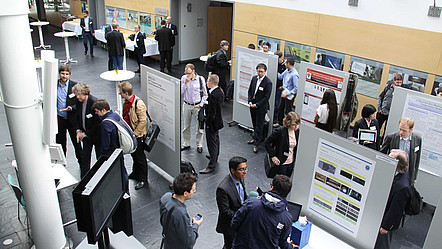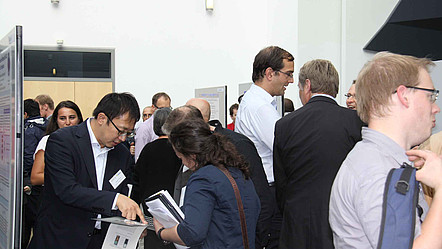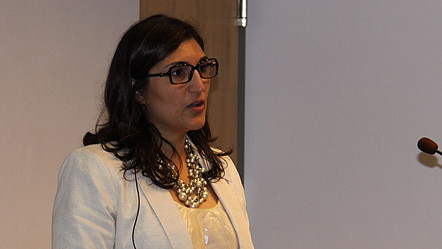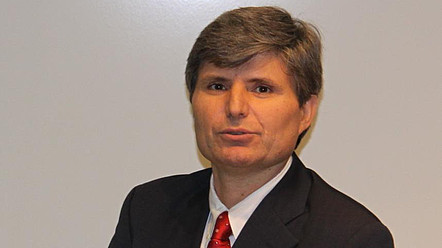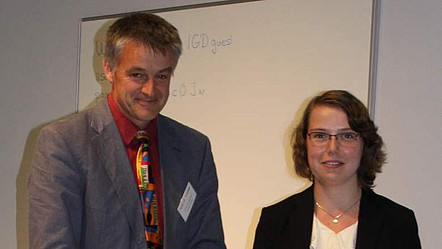Conference report on IEEE BIOSIG 2014
During 10 – 12 September the 13th edition of International Conference of the Biometrics Special Interest Group (BIOSIG) took place at Fraunhofer IGD in Darmstadt, Germany and attracted 82 registered participants from 21 countries.
The program was composed of scientific research contributions on the one hand and application oriented presentations as well as technology transfer examples on the other hand.
The opening keynote talk was provided by Jean-Christophe Fondeur, who is the vice president research & technology for Morpho. He illustrated the long path of biometric evolution over 25 years from small forensic systems to large scale AFIS and commercial application. Applications have changed a lot in scope since, going from dedicated usage for forensic purposes to the commercial applications for payment. They have also changed a lot in scale, starting with limited number of users and reasonably small databases (a few million people) in the 90's to much larger systems today, with hundreds of millions of users like in the Indian UID project or in the deployment on smartphones.
The talk summarized how advances were made possible through technological improvements in the core areas of sensors and algorithms, but also in related area like computer science, consumer electronics or systems architecture.
The second keynote was given by James Wayman (San Jose State University, USA) about ten continuing issues in biometric performance testing and reporting.
The talk was closely related to the genesis and future of the international standard ISO/IEC 19795-1 “Biometric Testing and Reporting – Part 1: Principles and Framework” , which was created to present the requirements and best scientific practices for conducting technical performance testing.
Eight years after adoption, this standard is now undergoing an update. The standard is necessary because even a short review of the technical literature on biometric device reveals a wide variety of conflicting and contradictory testing protocols and thus reported test results are difficult or impossible to compare. The root cause is that our understanding of automated human recognition (“biometrics”) is fragmented at the deepest levels, even within single organizations.
The keynote explored the divisive issues that prevent test reports from being “commensurate” in the sense of allowing technical performance results from two reports to be compared in a meaningful way. Inspiring perspectives were presented specifically addressing closed-set testing and "Rank k accuracy", testing from single session data, "confidence intervals", attempts to determine the “probability of a match”, Equal Error Rates, and setting thresholds to minimize loss functions.
Accepted conference contributions included 15 presentations covering fingerprint, vein, voice, face, iris and periocular recognition and also addressing new features extraction approaches such as the Symmetry Assessment by Finite Expansion (SAFE). Further contributions discussed biometric template protection schemes and identified further research needs to enhance these schemes. Another relevant topic covered in the conference presentations was the area of presentation attack detection and the resistance of biometric sensors against spoofing.
The poster session was a good mix of research results from academic and industrial research labs and visitors did spend a significant amount of time in the poster exhibition before the start of the social event with the traditional barbeque – providing lots of opportunities for networking.
On the last day of the conference Elham Tabassi from the US National Institute of Standards and Technology (NIST) addressed quality measurement and how it can help improving biometric system accuracy and efficiency during the capture process.
Ten years after NIST issued the first NIST Fingerprint Image Quality (NFIQ) algorithm now the new NFIQ2.0 is close to its release and currently tested on large scale datasets. NFIQ2.0 was developed by NIST and the German Federal Office for Information Security (BSI).
The keynote talk provided the preliminary findings of the NFIQ2.0 algorithm and highlighted the most recent technical work regarding histogram-based measures that aligns the NFIQ2.0 with the evolution of the ISO/IEC 29794-4 standard. NFIQ2.0 aims to satisfy the need of industry and operators of mobile capture devices for a new quality assessment of fingerprint images. The new NFIQ2.0 is again implemented as open‐source software with the intent to be used in large governmental and commercial deployments such as the European VIS.
The last conference day concluded with an impressive keynote by Ioannis Kakadiaris (University of Houston) presenting biometrics research in the areas of 3D face (and ear) recognition, 3D-aided 2D Face Recognition, 2D-2D Face Recognition, and profile-based face recognition.
He highlighted the approaches that were developed to capture the details of an individual’s face and to represent this 3D geometry information in an efficient 2D structure and illustrated why the 3D-3D face recognition software ranked first in the 3D-shape section of the 2007 Face Recognition Vendor Test (FRVT) organized by NIST.
He also highlighted the progress in addressing critical challenges including low resolution data, indoor/outdoor illumination, accurate landmark and pose estimation, cross-resolution matching, and score normalization.
As in previous BIOSIG conferences participants of the conference themselves voted for the best paper and the best poster that was presented at the conference. The winner of the BIOSIG 2014 best paper award is Fieke Hillerström (The Hong Kong Polytechnic University) for her presentation “Generating and Analyzing Synthetic Finger-Vein Images”, which convinced the majority of the participants.
While the poster session showed a good number of impressive research results that stimulated long discussions, there was one contribution, which was not only in the biometric content but also with regard to presentation methodology very innovative and outstanding. It was the interactive gaming poster of Luuk Spreeuwers, which received by far the most votes.
Thus the BIOSIG 2014 best poster award was granted to Luuk Spreeuwers (University of Twente) for his work “Fixed FAR Vote Fusion of Regional Facial Classifiers“.
The BIOSIG conference was preceded by the EAB Research Project Conference and was further co-located with two satellite workshops:
The meeting of the TeleTrusT Biometric Working Group and the
EAB-COST-ACTION joint meeting on a “Strategic Agenda on Ethical,
Societal and Privacy Aspects of Biometric Technologies”.
The 2014 BIOSIG conference was jointly organized by the Competence Center for Applied Security Technology (CAST) and the special interest group BIOSIG of the Gesellschaft für Informatik e.V. (GI).
The conference was technically co-sponsored by IEEE Biometric Council and the papers will be added to IEEE Xplore.
Next year the BIOSIG conference will take place between
September 09 to 11, 2015 in Darmstadt, Germany.


